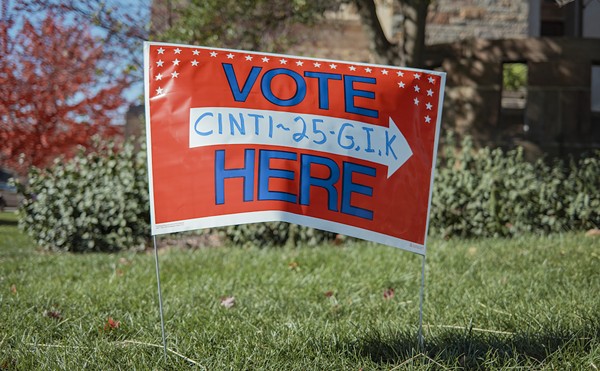During a Dec. 15 media briefing with Hamilton County officials, Dr. Richard Lofgren — UC Health's president and CEO — said that COVID-19 continues to be a big threat within the region as vaccination enthusiasm has waned, new coronavirus variants are popping up and people are gathering indoors for the winter holidays.
"I am concerned that it's become commonplace that we've almost become numb to the impact that this pandemic has on our daily lives, particularly in the healthcare arena," Lofgren told Hamilton County Commissioner Denise Driehaus and Hamilton County Public Health Commissioner Greg Kesterman.
"If there's any message I have that's highlighted in the data, it's that this pandemic is not over. It is active and alive and is actually overwhelming our health systems," he added.
Kesterman said that Hamilton County has 8,000 active cases of COVID-19 or about 455 per day. That's part of an upward trend over many weeks.
Officials are concerned that another winter COVID surge — like the one that filled hospitals and closed down businesses — is coming.
"What you will find is that our week-over-week numbers are similar to what we were seeing back last winter," Driehaus added. "Last year... when we were really in the throes of all of this, our numbers now are trending right up into that direction, and that is a terrible thing."
"That's why we continue to raise the alarm with people and encourage folks to do what we know works, which is get vaccinated and wear a mask around folks you don't know and perhaps are unvaccinated," she continued.
As of Wednesday, 576 people are hospitalized with COVID-19, 142 are in the intensive care unit and 102 are on ventilators. (Kesterman noted that all figures are a little low because the Ohio Department of Health had only recently added cases that it previously hadn't counted. That may continue.)
"We are seeing at this point the most number of patients hospitalized in southwest Ohio since the peak in the fall and winter last year," Lofgren said.
Lofgren said that colleagues in Cleveland have indicated that the northern city is in "dire straits" with coronavirus, with more cases now than at any point in the pandemic. He said that patients requiring critical care and on ventilators are in emergency rooms for days before beds become available.
"Their staff is stretched, they're canceling elective procedures, they're diverting hospitals. They simply do not have the capacity," Lofgren said. "And when I look at their path and trajectory... I feel like we in southwest Ohio may only be a couple weeks behind," he added.
As residents gear up for the ongoing winter holidays, Lofgren warns that critical care for non-COVID patients is being delayed because many healthcare staff have left the industry and the remaining ones had little relief since the pandemic began in earnest in March 2020. Cincinnati doctors have highlighted this point throughout the year, especially as the Delta variant caused a dramatic, sustained spike in cases, including in children.
"Last year when we peaked (in COVID-19 cases) in the pandemic, it really stretched our hospital capacity. We had a lot more staff than we do now," Lofgren said. "Last year, we actually asked our frontline providers to do heroic work and extra shifts... and maintaining a level of activity that's just not sustainable. As we think about this current surge, we're very concerned about the fact that we really have exhausted our human capital to be able to respond to that."
"What people need to understand is when we get overwhelmed as a healthcare system with COVID, not only does it push our ability to take care of COVID patients, it pushes our ability to take care of non-COVID (patients)," Lofgren continued.
Two people in central Ohio have the new Omicron variant, Kesterman said, which is quickly spreading throughout the United States and is concerning officials as much as Delta did this year. Kesterman noted that the patients had no recent travel activity, which indicates that they had gathered with someone else who had traveled and spread the virus.
"We don't have any (Omicron cases) here in Hamilton County that we know of, but the likelihood that we will soon see cases is extremely high," Kesterman said.
Driehaus and Kesterman stressed that Hamilton County continues to provide free COVID-19 vaccinations and also is offering free at-home testing kits. Vaccines are available to people ages 5 and up. Learn more and find locations at testandprotectcincy.com.
Sign up for our weekly newsletters to get the latest on the news, things to do and places to eat delivered right to your inbox.






